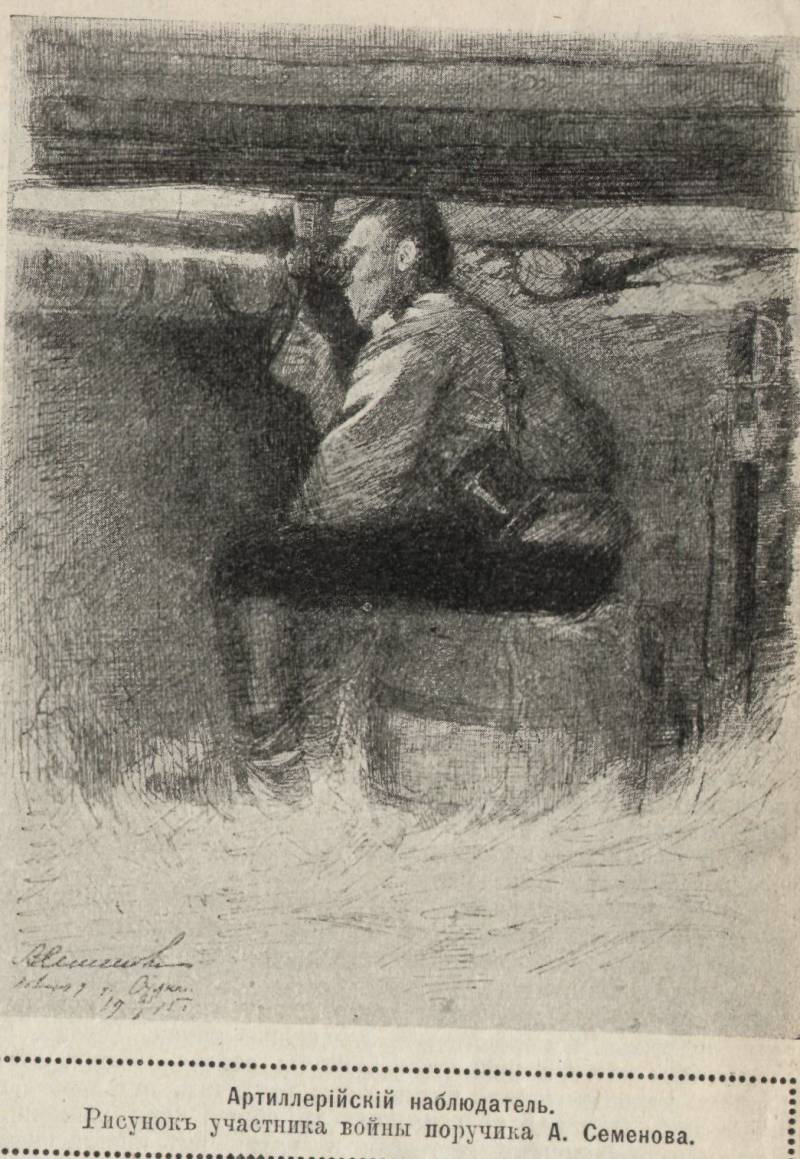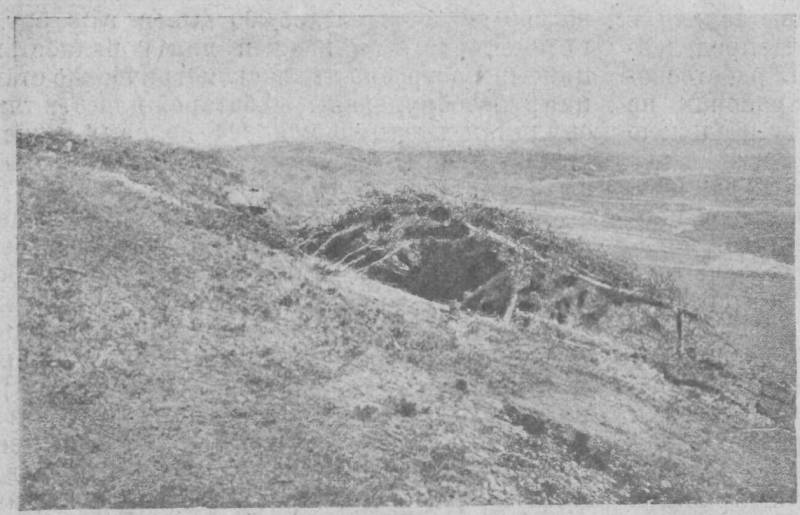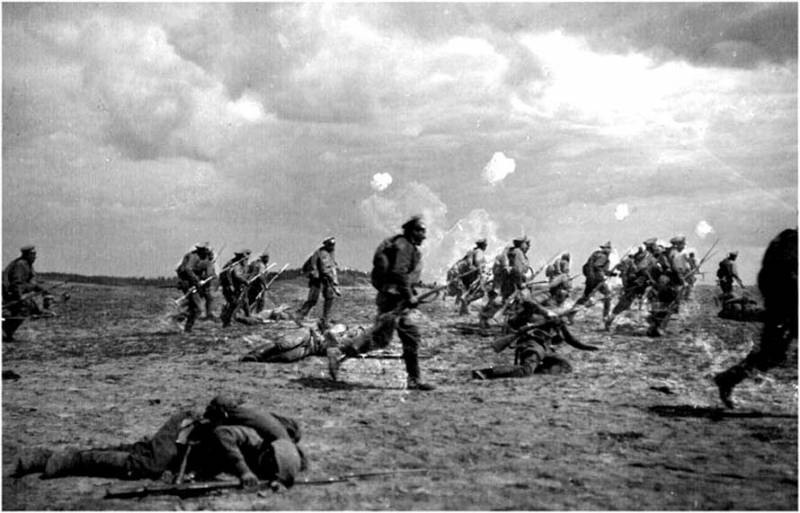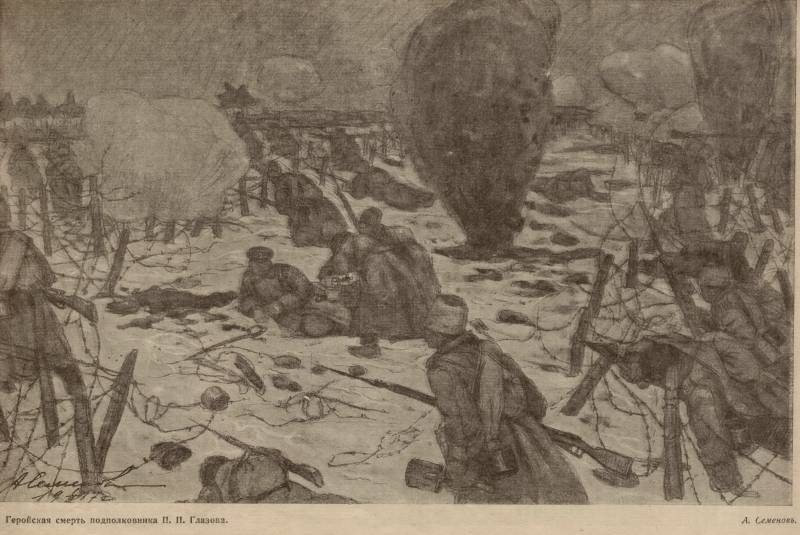Break through the wall without breaking a head. H. 7
The calculation rate for this operation applies to the South-Western Front - 1 division in the first line on the 2 km of front, as well as 60 guns (half of them are light guns and a third - howitzers) and 16 mortars per kilometer of the front. Trench Guns - 8 per division.
Since the combat capability of the majority of Russian units in revolutionary conditions was tending to zero, the command of the Southwestern Front had to raise the capacity of the troops — shock units were formed from the best soldiers and officers, and the troops were saturated with equipment. In fact, for the first time during the war, the volume of ammunition was not limited - and a wide range of combat missions fell on the artillery.
Russian troops managed to achieve a tactical breakthrough.
E. von Ludendorff noted a significant amount of ammunition used by the Russians during the offensive in Eastern Galicia. [Ludendorff E. Decree. cit. C. 434]. So, on the front, assisting the offensive of the South-Western Front of the 10 Army of the Western Front, “The destruction carried out was very solid. The trenches of 1 and 2 lines are badly damaged; partly destroyed, partly filled up with many dugouts and machine-gun nests, both behind the trenches and in the nodes and behind them. The destruction of the flanking faces was weaker ”[See. Artillery standard. Part of 1 ; Artillery standard. Part of 2 ; Artillery standard. Part of 3]. In order to destroy more solid defense units, the commanders of artillery groups attached others to the working batteries, sometimes massaging fire up to 4 batteries in one area. Batteries that performed their tasks received new ones. Light artillery cleared and widened the aisles made in the wire fences.
M. Hoffman wrote about the battles with the troops of the Russian Western Front, that the German command had to worry about when the Russians broke through the German front near Krevo. Strong artillery fire managed to detain the Russian troops, already penetrated into the German positions, and then force them to surrender the occupied trenches. Because of the revolution, the Russian army lost a significant part of moral stamina - the situation would have become more difficult before. [Hoffman M. War of Opportunities. C. 153].
So, according to the Russian soldier-front, artillery preparation was carried out brilliantly. The German wire barriers were swept away, and the regiment with small losses broke into the 1 line of dilapidated enemy trenches. The 2-I and 3-I lines of the German defense were taken in combat, and then the German counter-attack was repulsed - and about 200 German corpses left to lie, buried in the ground. But behind the 3 line, the Russian chains lay down, demanding a shift - at the rally it was promised that the guard would lead the shift as soon as the German lines of defense were broken. The 6 th Finnish regiment refused to attack further - he was waiting for the Guardsmen to replace them. But when the regimental committee sent a delegation to the Guards Corps, it turned out that the soldiers of the latter were not going to attack - in fact, the corps was led by a Bolshevik-minded committee, which was against the offensive [History Civil War in the USSR. T. 1 M., 1935. C. 140].
The summer offensive of 1917 was indicative of the thoroughness of its preparation.
Engineering reconnaissance was carried out, infantry and artillery positions were built, corps and army artillery depots, heavy dugouts and observation posts, dirt and highways, wide-gauge and narrow-gauge railway lines.
False batteries were built, masking of artillery positions was widely used - and none of the masked batteries were discovered before they opened fire. Only on the day of the battle - according to the brilliance of shots - did the enemy manage to install Russian batteries.
The batteries were supplied with wattles for installation in front of the guns - to reduce the effect of dust from shots, especially to the unmasking artillery during the dry season. Especially for wetting wattle with water on the wells were built wells. The batteries were dragged in with wire nets (the color of the terrain) - and then everything was painted to match the environment. Some batteries used wooden shields instead of nets, which fell down with earth and were painted.
Disguised 152-mm howitzer battery. Forest Radiotin, South-Western Front, June 1917
For example, the 4-gun battery of the 9-Mortar Artillery Battalion was disguised using nets with interlocking live branches in them - this masking cover was painted green, as well as the battery dugouts and its observation post. When masking the 2 heavy battery, the letters F extracted the earth were stained, and to destroy the shadows, brushwood was laid, which was also watered with a solution of paint. After the installation of the battery was completed, two large panels were painted in a protective color, of which 2 tents were installed, mounted above the implements.
When masking actively used overlap of brushwood. The parapets and brushwood were brown with green spots (imitating the color of a grass-covered plowed field). Earth mounds were painted green.
1 is a separate heavy battery of letters Ж and 2 of the 12 of the siege park near der. Troszyants, who were on the chalky soil, were masked with white canvas, for which a skeleton was arranged over each weapon and a canvas was stretched, and the extracted white earth, scattered in small areas, was sometimes painted dark brown. This gave the impression of a plowed field with white spots (the latter looked like the roofs of dugouts built in this area in the spring of 1917).
Used as an assistant, and harvested material - sleepers, mats, shields, masks, nets, etc. Bridges were painted in the color of water, artillery cellars - in the color of meadows, rails and sleepers - in the color of the highway, etc. It was spent on data works up to 3 tons of paints, 1,2 tons of soot, 256 kg of naphthol, 672 kg of chalk, 288 kg of lime, and up to 9 tons of cement.
Intelligence work has also given great results. By the beginning of the operation, it was adjusted to 70% of enemy batteries. The positions of the enemy batteries could be determined either by a serif system using sound measuring methods or by observing from tethered balloons. A high-quality connection was established - at least 2-3 communication lines stretched from each observation point to the battery.
The artillery ammunition plan was drawn up in advance. The technique of using artillery was also reasonable. After the end of the shooting, the artillery of each corps proceeded to the shooting for the destruction of the enemy positions assigned to them, and to the destruction of the wire barriers. In addition to artillery and mortars worked.
During the artillery preparation, the artillery of each corps repeatedly made false transfers of fire — the Germans opened barrage and found and confirmed the locations of their batteries. The advancing Russian infantry was accompanied by a barrage of fire, the schemes of which were distributed to the commanding staff - up to company commanders inclusive.
The summer offensive of 1917 is an extra example of the fact that the technician cannot compensate for the lack of morale and will to win.
Austro-German troops localized the Russian offensive.
In many ways, this was facilitated by the fact that in 1917 they applied a new tactical device - the so-called. “Counterattacks from the depths”: significant infantry masses hit the enemy that had broken through from the depth of defense (5-8 km from the front edge), acting under the protection of second-line artillery. Russian troops (and so largely lost their combat capability during the period of “deepening the revolution”), breaking through the first line, counterattacked before they managed to gain a foothold and tighten their artillery.
As a result, the operational-tactical doctrine of the Russian army during the period of positional warfare in 1917 was based on the following main elements: the fortified band consists of a number of fortified rifle positions interconnected by communications and artillery positions; the number of rifle positions is no less than 3's, but depending on the depth of their defenses there can be more; the distance between the 1 and 2 lines of defense is approximately 300 steps, between the 2 and 3 lines - 500-1000 steps; the depth of the reinforced strip at 3's rifle lines is up to a kilometer; besides the main fortified lane, in the near rear (kilometers in 6-8) there was a rear fortified lane; the rifle positions were a series of staggered strongholds, surrounded by 2-3 with artificial obstacles and interconnected by means of defense of communications moves; the width of the breakthrough front depends on the goal, available forces and means, terrain properties - for the greatest impact force a relatively small area is needed (length along the front is 1,5-2 km), but expandable to the sides of the flanks by at least 3-4 km (better 7- 8 km) in each direction; accordingly, the total width of the front of the attacked area is 10-20 km; all calculations, efforts and means of an attacker, including artillery preparation, should be directed to breaking through the entire fortified band of the enemy at once - preferably one non-stop offensive; for the success of a breakthrough, an infantry division must be assigned to every kilometer of the section being broken, at least 1 infantry regiment must be assigned to every kilometer of a section adjacent to the breakthrough, and in the near rear to develop the strike - 1-2 divisions (i.e., to break through the 8 front - 10 km need 2-3 corps from 5-6 divisions, and on the front 15-20 km - 3-4 corps from 7-8 divisions); On the 1, a breakthrough front km is needed - 40 light and 20 heavy guns, and on 1 km of neighboring attacked sites - 15-20 light guns.
The ending should ...




Information